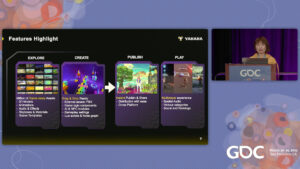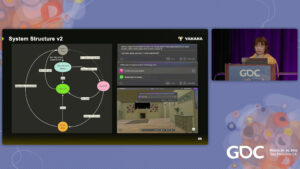Nvidia‘s virtual conference GTC and the in-person Game Developer Conference in San Francisco ran on separate tracks after two years of crossover presentations on virtual platforms. The technical GTC continued elaborations on digital twins and virtual cooperation mainly in industrial application areas, while GDC celebrated the reestablished opportunity for personal meetups and caught up with the latest trends in consumer related game productions. Both events focused heavily on the implications of Artificial Intelligence and cloud-based distribution, especially in XR application fields.


Nvidia’s XRCloud distribution system promises more flexibility and cost reduction on the hardware side, but the current state of this infrastructure still is too infant for actual consumer application and therefore addresses mainly industrial appliers. Their USD-based Omniverse platform for virtual collaboration also focuses on industry demands more than consumer expectations and translates virtual production procedures developed by the film animation industry into broader application scenarios also for XR and the simulation industry.
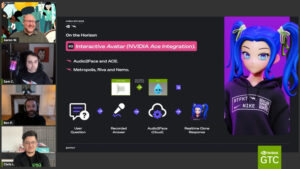
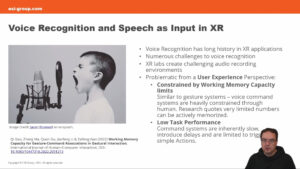
Artificial Intelligence already had some gigs at former conferences with Motion Matching animation procedures and markerless Motion Capture recalculations. But with the advent of Generative AI and chatGPT-access for the public, AI now becomes the main topic of every computer related event – with highly variable reliability and quality standards. Political considerations and media discussions often lack competency. The definition-approving authority of science, when originally having coined the term for pure marketing reasons, is heavily damaged by corruption and interest biases, making it difficult to provide an orientation framework for this matter.
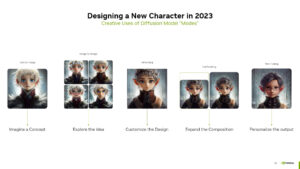
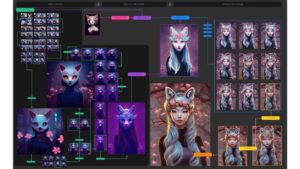
Most lectures and panels at GDC dealt with the basic legal and ethical implications of AI. GTC presented conversations between artists and programmers about changes in design procedures for AI enhanced game productions. Application scenarios extend from logistic enhancements with faster and more detailed library assortments, better code checking procedures, more refined options for drafting and prototyping operations to case-oriented player support and game testing. But the integration of AI tools into game engines and production pipelines continues to require fundamental knowledge of these programming and production structures. In the connection with production processes, this seems to be more comparable with visual programming and low-code aspirations than with an entire reformation of the creative process.
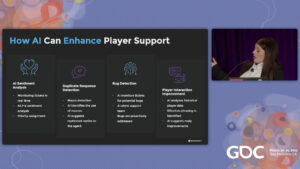
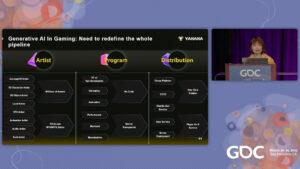
The Chinese multiuser gaming platform Yahaha presented a remarkable lecture on AI integration at GDC: a specifically prepared and trained database renders conversational user generation effectively possible in this very specific framework, a walled garden with cultivated botany and well-instructed gardeners. While this impressing example points to multiplayer Metaverse propositions for the game industry, GTC proposed another remarkable sample application of AI for spatial computing and XR: voice interaction, that could finally free VR from traditional game mechanics to strive for a more organic understanding of human-machine communication.
